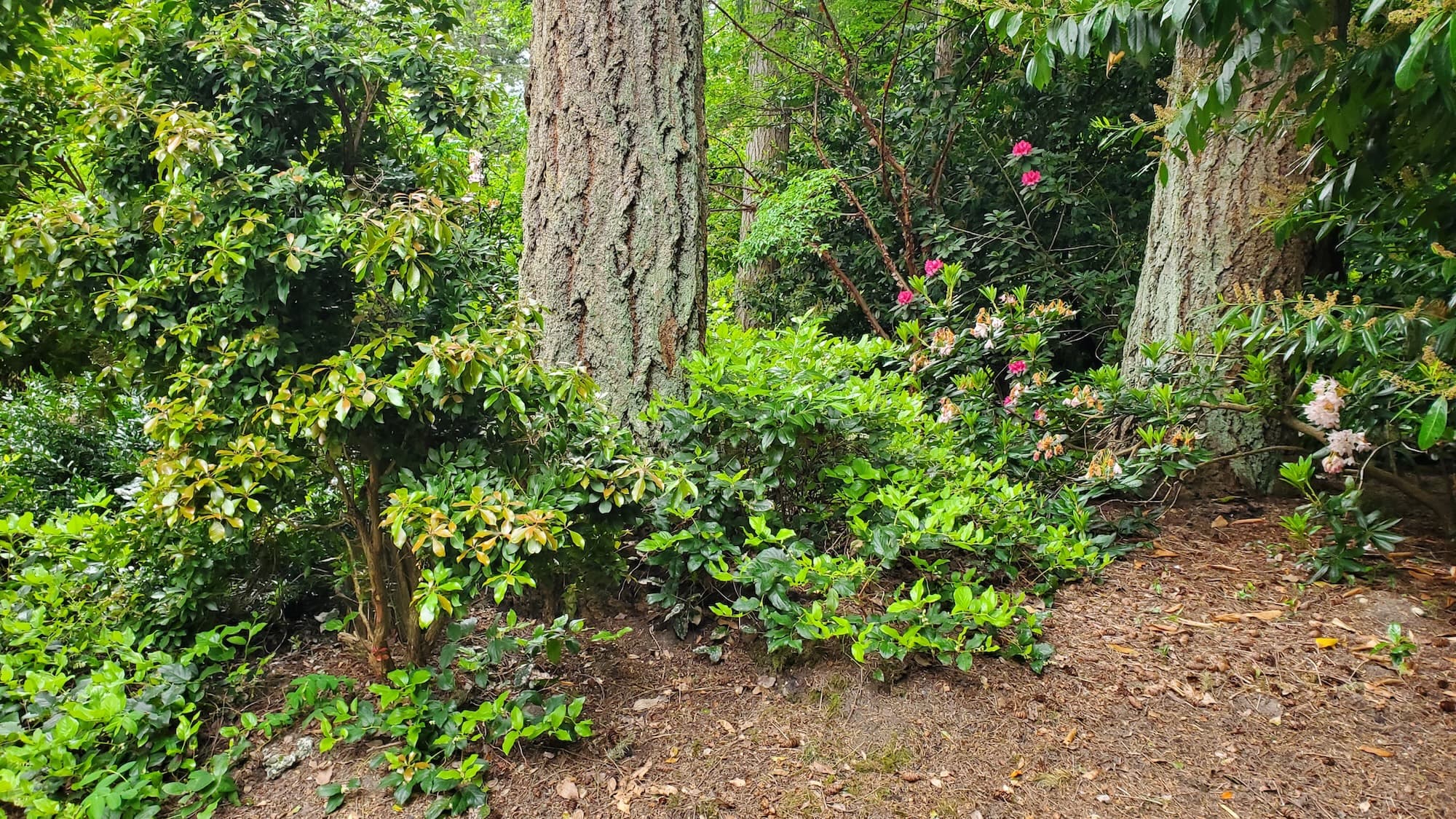Des Moines Shrub & Tree Transplanting & Relocation
Transplanting a shrub or small tree is more than just digging a hole and dropping it in. If not done right, you risk root shock, damaged roots, and a plant that might struggle for seasons to come. But don’t sweat it—we’re here to ensure your beloved green friends thrive after the move, settling in beautifully in their new spots!
Why Might You Need to Relocate Your Plants?
Here are some common reasons you might be thinking about moving your plants:
- Space Issues: Your plant has become a bit of a giant, crowding sidewalks or blocking windows.
- Light Conditions: It’s either getting too much sun or not enough, leading to weak growth.
- Root Problems: Roots encroaching on foundations, sidewalks, or sewers can cause headaches down the line.
- Renovation Needs: You have a big project in mind and want to relocate plants instead of tossing them.
- Drainage Changes: Your garden bed is too soggy in winter or too dry in summer—no thanks!
- Love for the Plant: You adore the plant but just want to position it in a better spot.
Quick Note: If you’re moving plants in the public right-of-way (like street trees or planting strips), permits may be required. And of course, we always call 811 before we dig—safety is our priority!
What We Move (and When)
- Shrubs: From azaleas to hydrangeas, we can handle a variety including boxwood, laurel, and pieris.
- Small Trees: Think Japanese maple, vine maple, serviceberry, and dogwood, among others.
- Best Season for Transplanting: Late fall to early spring is ideal when plants are dormant and less stressed. Moving in summer is doable, but it requires a bit more TLC.
- Size Considerations: We can manage plants up to a 4” trunk caliper or shrubs about 6–7’ wide without needing cranes. Got bigger plants? We’ll give you some honest alternatives.
Our Transplant Method (the secret sauce!)
- Planning & Marking: We assess the plant’s dripline and dig the new hole first—preparation is key!
- Root-Ball Preparation: We create a snug root ball using burlap or straps, following the golden rule: 10–12” ball per 1” trunk.
- Careful Lift & Placement: We ensure the right depth (with the root flare visible) and correct orientation for optimal sun and wind exposure.
- Backfill & Watering: We backfill with native soil first, mixing in other materials only if absolutely necessary.
- Staking if Needed: Low, flexible staking for 3–9 months to keep your plant steady, removed once it’s established.
- Watering Basin & Mulch: We apply a 2–3” layer of mulch, carefully pulled back from the trunk to prevent rot (goodbye “volcano” mulching!).
Our Annual Maintenance Plan (Your Yard’s Best Friend)
This aftercare routine ensures your transplants not only survive but thrive:
- Establishment Watering: We set up a simple schedule for the first 6 weeks, tapering off as roots establish (or we can handle that for you).
- Mulch Top-ups: Keeping roots cool and weeds at bay.
- Structural Pruning: Light corrective cuts after leaf-out rather than heavy hacks.
- Targeted Fertilization: Only if necessary based on soil conditions—not a guessing game here.
- Staking & Tie Removal: Regular checks and usually removing stakes at 6–9 months to allow trunks to strengthen naturally.
We prioritize low-maintenance landscaping. Our goal is to create fewer problems between visits and lighten your workload.
Service Cadences (Find Your Fit)
- Quarterly: Spring and fall deep clean + two transplant check-ups.
- Bi-Monthly: A balanced option for most Des Moines yards.
- Monthly (first 90 days only): Perfect for summer moves or larger specimens needing extra love.
What Annual Maintenance Includes
- Deep Watering Plan: Clear guidelines on gallons-per-week based on plant size.
- Basin Reshaping & Mulch Refresh: To address slumps or washouts.
- Light Structural Pruning and Deadwood Removal: Keeping plants healthy and tidy.
- Pest/Disease Monitoring: Regular checks for signs of lace bugs, root rot, or sunscald.
- Soil Enhancements: Making necessary adjustments for compaction relief, adding organic matter, or managing wet feet.
Why Annual Maintenance Matters
- Increased Survival Rates: Less transplant shock means more root regrowth and thriving plants.
- Better Structure Early On: Setting correct scaffolds now equals fewer large cuts later.
- Water Efficiency: Ensuring the right volume and frequency saves you resources.
- Cleaner Beds: Fewer weeds competing with your new roots.
How It Works
- Free Estimate: We offer a straightforward approach through photos/videos or quick walkthroughs with clear, upfront pricing.
- Set Your Schedule: Choose from quarterly, bi-monthly, or monthly options.
- Service Day: We’ll lift, move, and plant your trees or shrubs correctly, plus prune, edge, and refresh mulch/gravel & lawns as needed.
- Follow-Up: We provide you with a simple watering chart, check-ins at 2–6 weeks, and easy add-ons if you’d like.
Why Des Moines Chooses Neat & Tidy
- A local crew experienced with Des Moines’s unique hills, alleys, and tight spaces.
- Licensed & insured; we ensure utility locations are checked before every dig.
- Transparent pricing — labor, hauling, and disposal included.
- Clean, punctual work; we leave no mess behind.
- A green-first approach to minimize landfill waste (we reuse plants whenever possible).
Ready to make a move—without the risk?
Call or text Neat & Tidy for a quick quote and a tailored transplant + aftercare plan that suits your yard perfectly. We’ll keep it neat and tidy—so you don’t have to!










